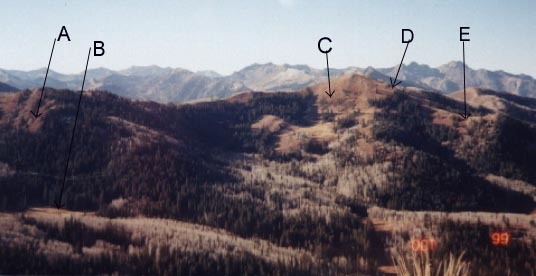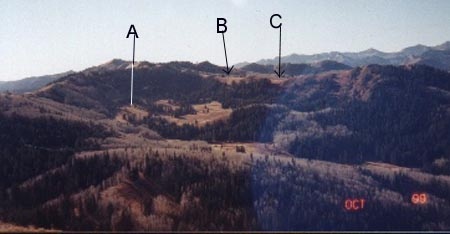"Spotting For Success"
Obviously, the purpose of preseason scouting is to find game. Sometimes we get lucky and bump into a nice buck while tromping through the timber, or have a trophy buck run across the road only a few hundred yards from our favorite camping spot. But more often we're forced to spend many hours, of many days searching high and low for the buck or bull we hope to find during the hunt.
Some of the most successful hunter's I know will swear that the key to harvesting trophy animals, is by spending more time sitting on your butt spotting than on your feet tromping through the timber. We'll start off by talking about the equipment needed to do some effective spotting.
Binoculars, a must have for any hunter. 10x40 or 10x50 and of the highest quality you can afford, preferably waterproof. Most importantly, they need to be comfortable to your eyes, because you'll want to spend at least 4 to 5 hours each day looking through them.
Spotting scope, it's a wonderful addition to those great binoculars. A good spotting scope will allow you even better spotting and at even greater distances. I initially spotted one of the biggest bucks I ever hunted at over two miles away. Even at that range, I could tell he was a giant buck. That scope is my pack ALL the time. Anyway, something in the 20 to 30 power ranges will work great. There are more powerful scopes available, but once you go over 30 power, the heat waves make it near impossible to see clearly. Again, the higher the quality the better.
 All right, so we have our equipment and we're perched on a high ridge over looking some big buck country. |
Pointer A shows a small opening on the shady slope. The opening is mostly chaparral, and the bucks love to spend the warm afternoons lounging in spots like this one.
B points to a meadow in the bottom of the canyon. Spot right along the edges early in the morning. In the summer especially, the bucks like feeding on that wet young grass.
C points to a patch of small 4 to 6 foot pines surrounded by an open grassy slope. As long as they're not bothered, bucks really enjoy bedding down in these types of spots. The bucks love that spot in the summer, good shade, many escape routes, and a nice breeze that keeps the flies off their antlers.
D and E are spots to keep a close eye on early in the mornings. The bucks will often feed only a few yards from those pines.
 Here's another photo. The opposite side of that ridge is a south slope, and is covered by quakies and brush. The deer will often roll over that ridge at points B and C in the early morning. Spots like these you'll want watch very closely, because you may only see the deer for a few seconds. They'll also roll over to the south slope late in the evenings. These are great spots to hunt if you can find a buck that goes over fairly consistently. |
Point A, scan the entire meadow and watch closely along the edges. Wise old bucks will typically remain close to the trees.
From here on out it's a waiting and watching game. If there's a big buck in a canyon like this, and you spend 3 or 4 days spotting long and hard, there's a good chance you'll see him.
The idea is to find a good buck, and watch him as often as possible. The more you see the buck, the better understanding you'll have of his habits. Which in-turn, will increase your chances of seeing him again during the hunt.
Good Luck All!
Written by: Brian Latturner
Click-a-Pic ... Details & Bigger Photos
Click-a-Pic ... Details & Bigger Photos
Hunts & Tags | Hunt Draw Odds | About Mule Deer | About Elk
Store | Classified Ads | Photo Tours | About this Site | Advertising |
Older Content | Email Us | Privacy Policy | Links | Podcasts
